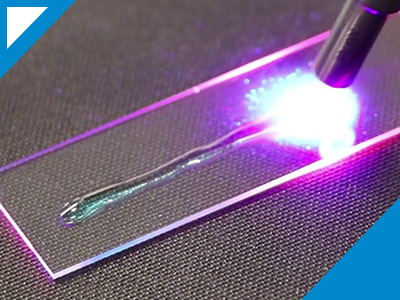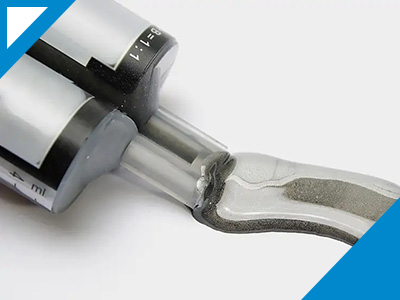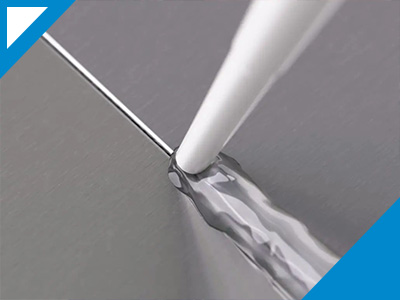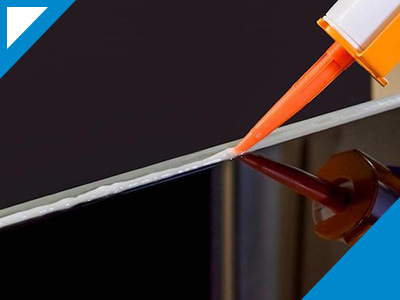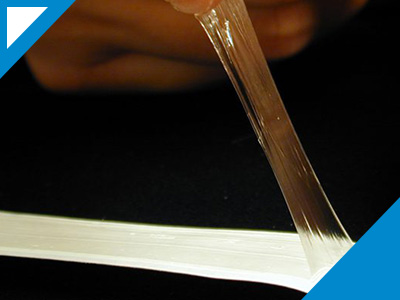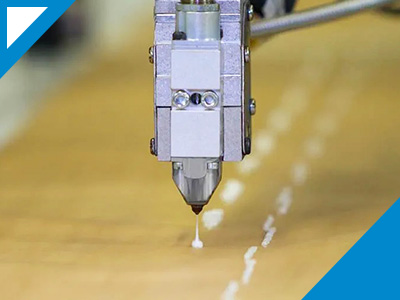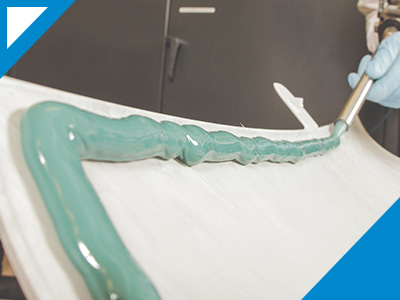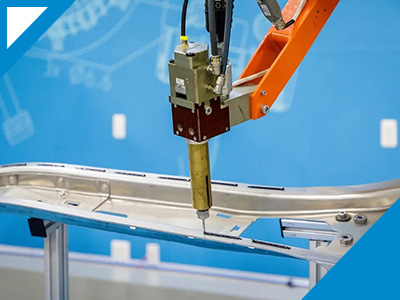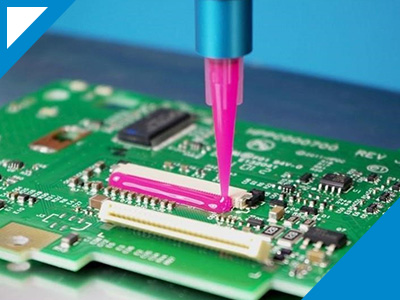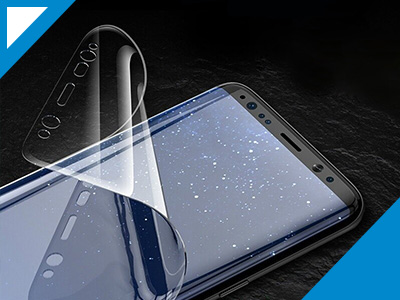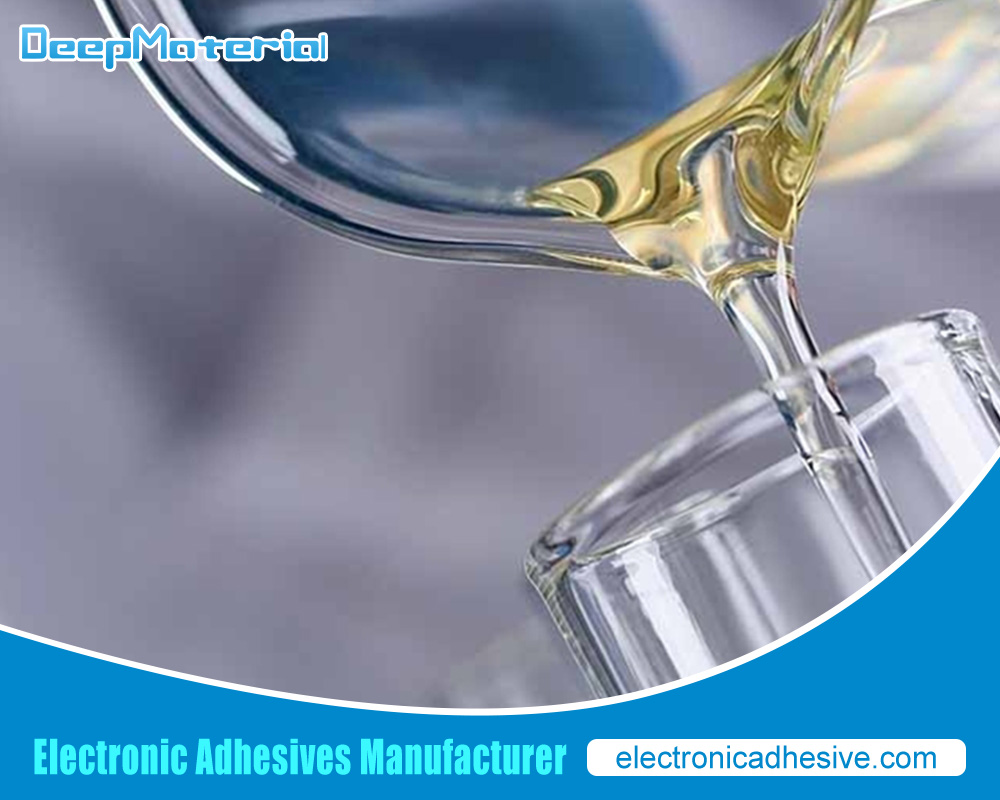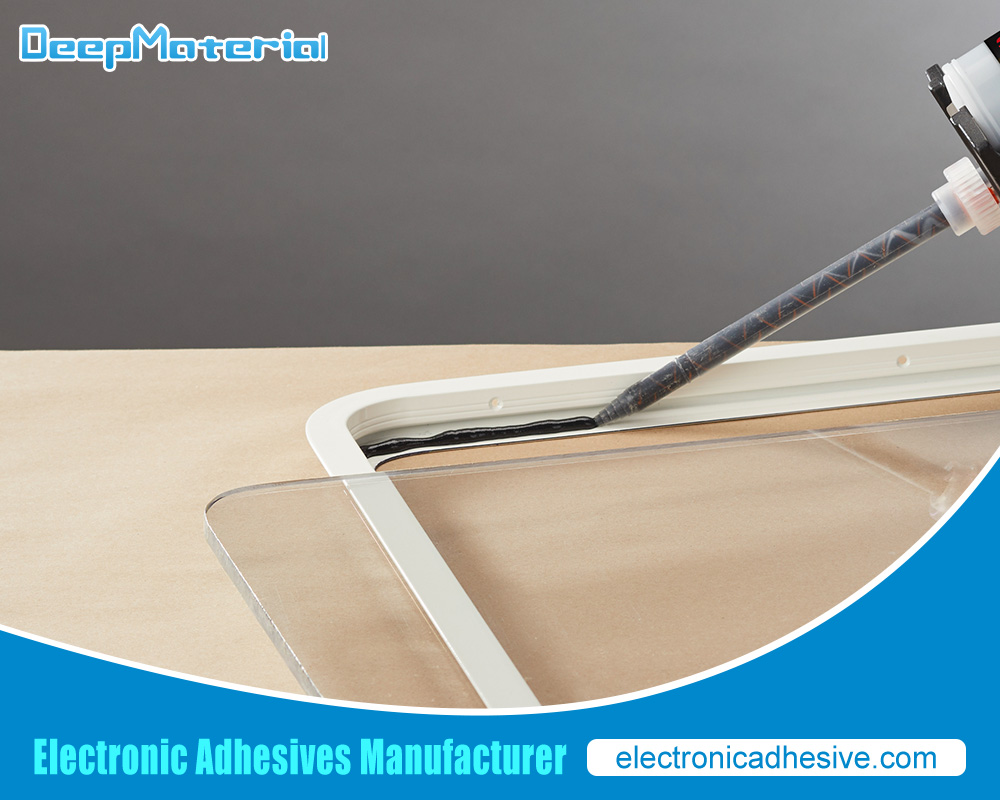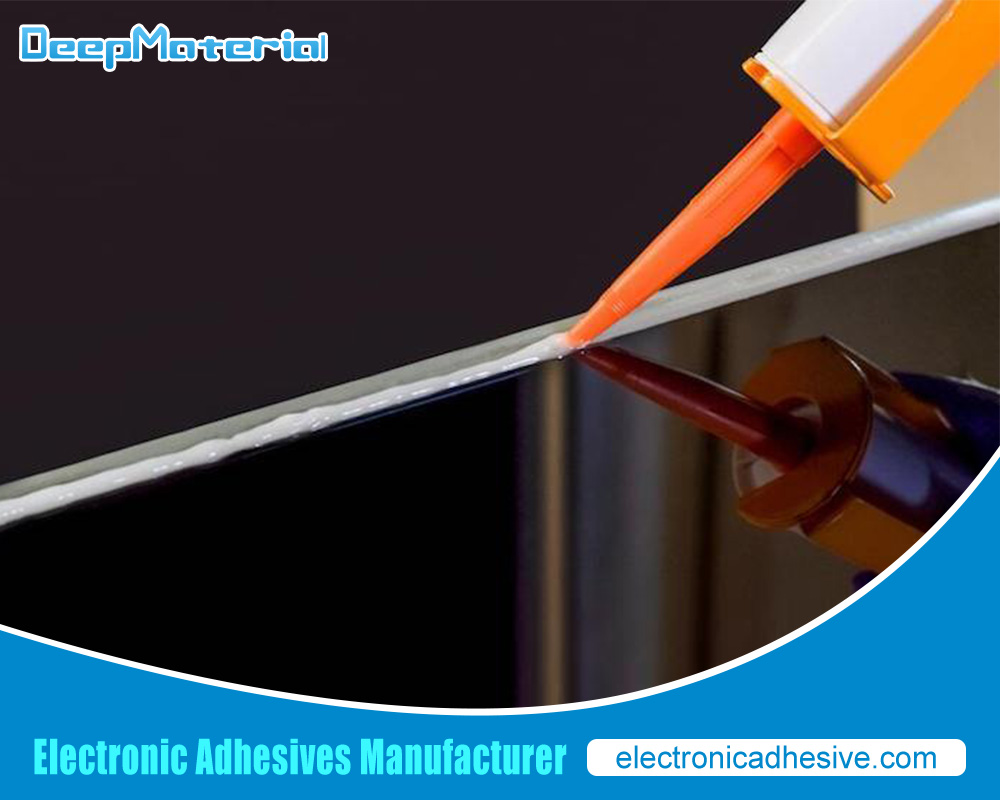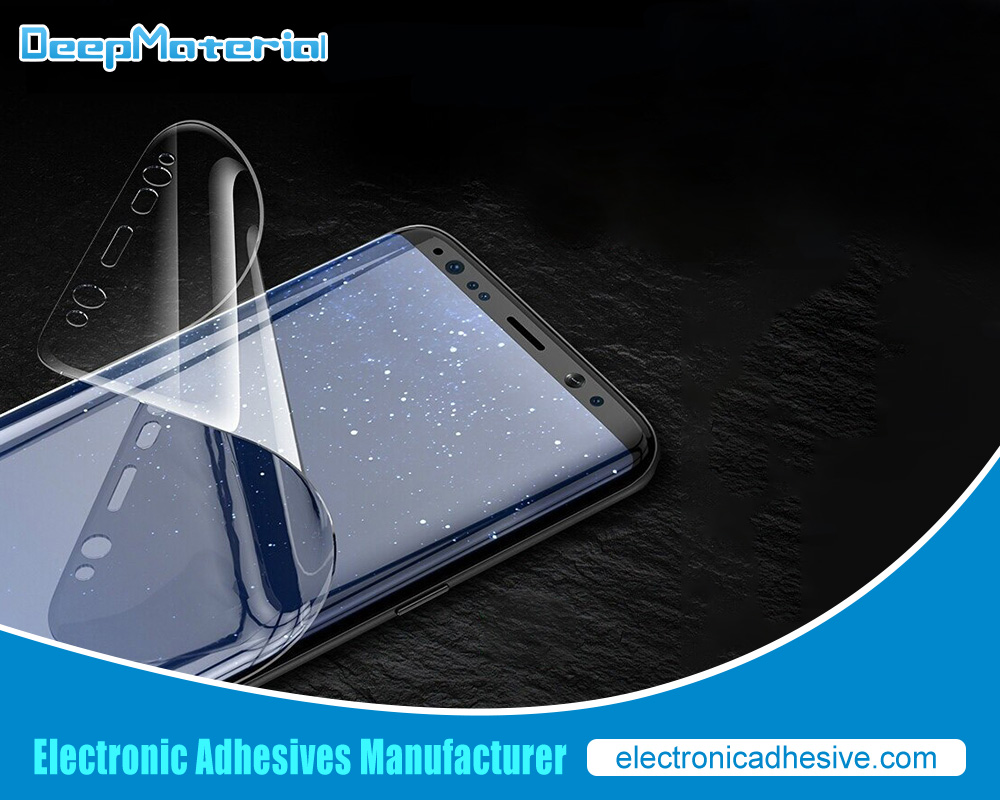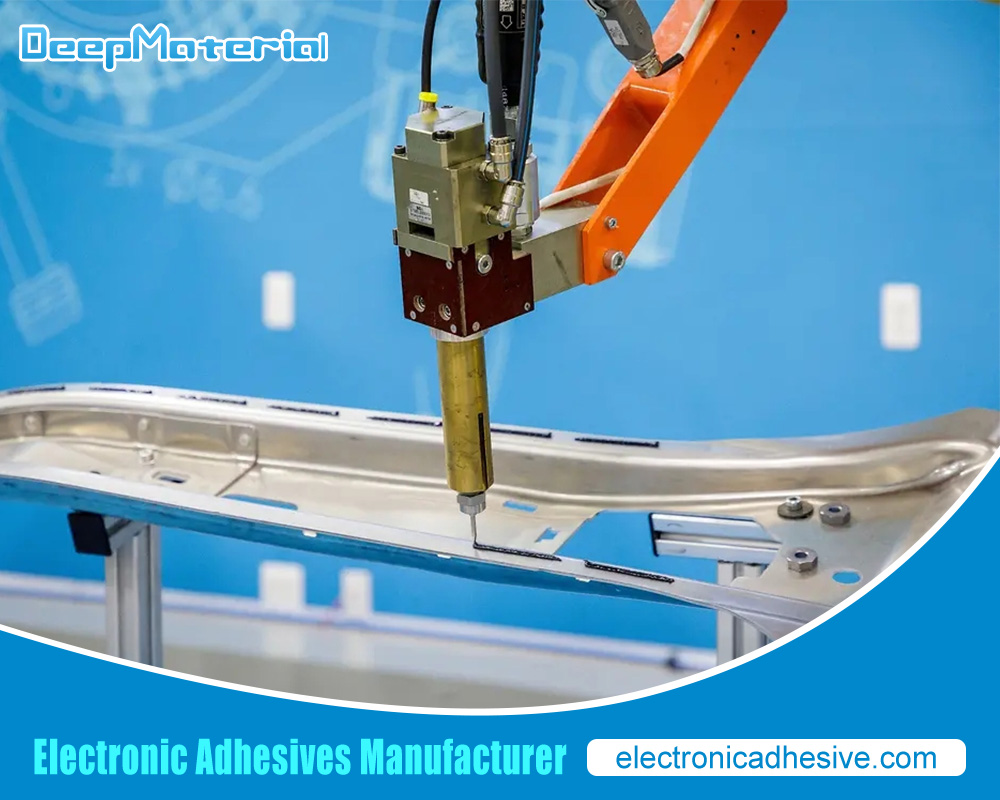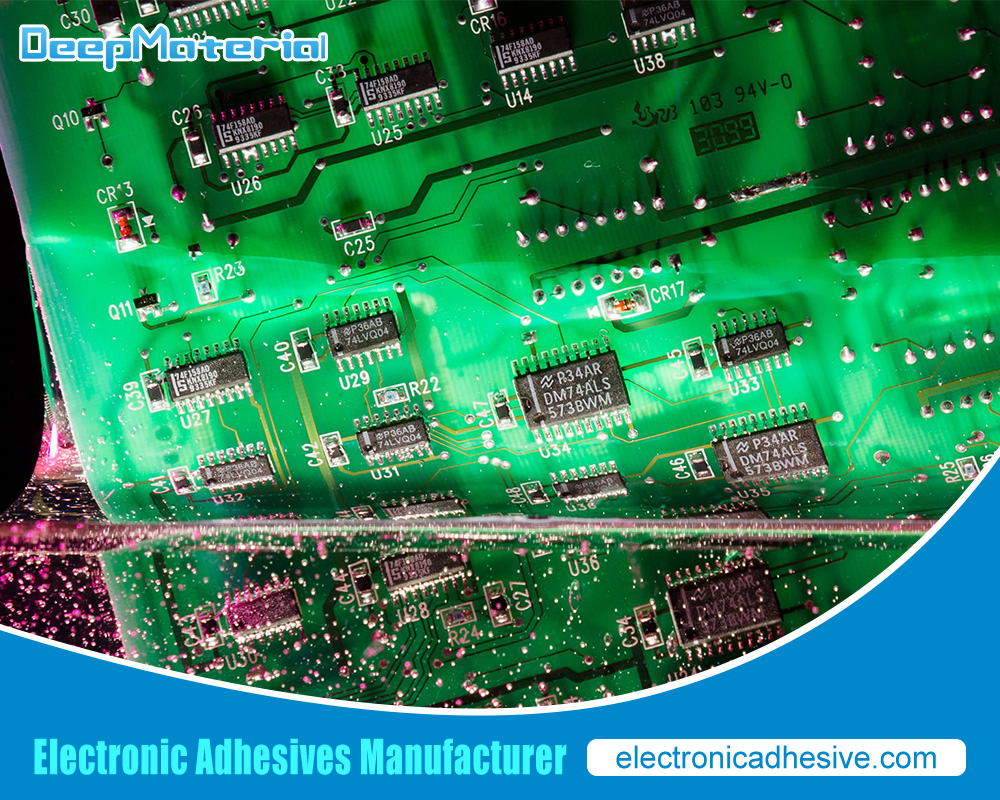Security Camera Adhesive

Installing security cameras is a critical aspect of modern-day surveillance systems. The effectiveness of security cameras depends on their placement, and Adhesive plays a crucial role in keeping the cameras in place. The suitable Adhesive ensures the cameras remain stable and secure, providing clear and consistent video footage. This article will explore the factors to consider while selecting the best Adhesive for your security cameras.
Importance of choosing the suitable Adhesive for security cameras
Choosing the suitable adhesive for security cameras is crucial to ensure the cameras are securely mounted and function properly. The right adhesive can help prevent the camera from falling or shifting, compromising the security of the monitored area. In this response, we will discuss the importance of selecting a suitable adhesive for security cameras, factors to consider when choosing a bond, and some common types of adhesives used for mounting security cameras.
Choosing the suitable adhesive for security cameras cannot be overstated. A poorly mounted security camera can lead to severe consequences, such as a break-in or theft going unnoticed. A camera that falls or shifts due to an inadequate adhesive can also damage it, rendering it useless and requiring costly replacements. Additionally, improper adhesive selection can lead to liability issues if the camera falls and injures someone.
When choosing an adhesive for security cameras, several factors should be considered, such as the mounting surface’s material, the camera’s weight, and the environment in which the camera will be installed. For instance, mounting a camera on a brick wall requires a different adhesive than mounting it on a metal surface. Additionally, a heavier camera requires a stronger adhesive, while cameras installed in outdoor environments require bonds that can withstand extreme temperatures and weather conditions.
Some common types of adhesives used for mounting security cameras include silicone adhesives, epoxy adhesives, and double-sided foam tapes. Silicone adhesives are versatile and can be used on various surfaces, and they are also waterproof and can withstand high temperatures. Epoxy adhesives are known for their strength and can be used on multiple surfaces, and they are beneficial for heavy cameras. Double-sided foam tapes are easy to use and can be used on various characters, and they are also waterproof and can be removed without leaving residue.
Factors to consider while selecting Adhesive for security cameras
When selecting an adhesive for security cameras, several factors must be considered to ensure that the camera remains firmly in place and is secure. Here are some key factors to consider:
- Surface Type: The first factor to consider is the type of surface the adhesive will be applied to. Different bonds work better on other characters, and selecting an adhesive suitable for the cover the camera will be mounted on is essential. For example, a smooth surface may require a different adhesive than a rough or uneven surface.
- Environmental Conditions: Another essential factor to consider is the environmental conditions to which the adhesive will be exposed. Will the camera be installed indoors or outdoors? Will it be exposed to extreme temperatures, humidity, or UV rays? These factors can affect the performance of the adhesive, and it’s essential to choose a bond designed to withstand the environmental conditions in which it will be used.
- Load Capacity: The load capacity of an adhesive refers to the weight it can support. When selecting a bond for a security camera, choosing one that can help the camera’s weight and any attached accessories are essential. It’s also important to consider any potential wind or other external forces that may act on the camera.
- Bond Strength: The bond strength of an adhesive refers to how well it holds two surfaces together. When selecting an adhesive for a security camera, choosing one with a muscular bond strength is essential to ensure that the camera remains securely attached to its mounting surface.
- Application Method: Some adhesives require unique application methods, such as mixing two components or applying a primer to the surface before application. When selecting a bond for a security camera, it’s essential to consider the application method to ensure that it is practical and feasible for the installation.
- Removability: Finally, it’s essential to consider the removability of the adhesive. Removing the camera from its mounting surface may be necessary without damaging it. If this is the case, choosing a bond that can be easily removed without leaving residue or damaging the surface is essential.
Types of Adhesive for security cameras
Security cameras are an essential part of any surveillance system, and they must be securely installed to ensure that they do not fall or get damaged. One way to ensure this is by attaching the cameras to the walls or ceilings with adhesive. There are several types of bonds available that can be used for this purpose. In this answer, I will discuss some of the most common types of adhesives for security cameras.
- Epoxy Adhesive: Epoxy adhesives are a type of two-part adhesive comprising a resin and a hardener. They form a strong, durable bond resistant to impact, vibration, and shock when mixed. Epoxy adhesives are ideal for attaching security cameras to walls or ceilings, as they can withstand the weight of the camera and its movement. However, they can be difficult to remove once they have been cured.
- Silicone Adhesive: Silicone adhesives are another adhesive that can be used for security cameras. They are flexible, waterproof, and resistant to temperature changes, making them ideal for outdoor use. Silicone adhesives have good adhesion to various surfaces, including metal, plastic, and glass. However, they may be weaker than other types of adhesives and may not be suitable for heavy-duty applications.
- Double-Sided Foam Tape: Double-sided foam tape is an adhesive with a foam core on both sides. It is easy to apply and can conform to irregular surfaces, making it ideal for attaching security cameras to walls or ceilings. Double-sided foam tape is also resistant to water and temperature changes. However, it may be weaker than other types of adhesives and may not be suitable for heavy-duty applications.
- Mounting Putty: Mounting putty is a type of adhesive that is ideal for temporary installations. It is a pliable material that can be molded into any shape and used to attach security cameras to walls or ceilings. Mounting putty is easy to remove and does not leave a residue, making it ideal for renters or those who need to move their cameras frequently. However, it may not be suitable for heavy-duty applications and may lose its adhesion over time.
Pressure-Sensitive Adhesive (PSA) for security cameras
Security cameras are an essential part of any surveillance system, and they must be securely installed to ensure that they do not fall or get damaged. One way to ensure this is by attaching the cameras to the walls or ceilings with adhesive. There are several types of bonds available that can be used for this purpose. In this answer, I will discuss some of the most common types of adhesives for security cameras.
- Epoxy Adhesive: Epoxy adhesives are a type of two-part adhesive comprising a resin and a hardener. They form a strong, durable bond resistant to impact, vibration, and shock when mixed. Epoxy adhesives are ideal for attaching security cameras to walls or ceilings, as they can withstand the weight of the camera and its movement. However, they can be difficult to remove once they have been cured.
- Silicone Adhesive: Silicone adhesives are another adhesive that can be used for security cameras. They are flexible, waterproof, and resistant to temperature changes, making them ideal for outdoor use. Silicone adhesives have good adhesion to various surfaces, including metal, plastic, and glass. However, they may be weaker than other types of adhesives and may not be suitable for heavy-duty applications.
- Double-Sided Foam Tape: Double-sided foam tape is an adhesive with a foam core on both sides. It is easy to apply and can conform to irregular surfaces, making it ideal for attaching security cameras to walls or ceilings. Double-sided foam tape is also resistant to water and temperature changes. However, it may be weaker than other types of adhesives and may not be suitable for heavy-duty applications.
- Mounting Putty: Mounting putty is a type of adhesive that is ideal for temporary installations. It is a pliable material that can be molded into any shape and used to attach security cameras to walls or ceilings. Mounting putty is easy to remove and does not leave a residue, making it ideal for renters or those who need to move their cameras frequently. However, it may not be suitable for heavy-duty applications and may lose its adhesion over time.
Epoxy Adhesive for security cameras
Epoxy adhesive is a popular adhesive widely used in the construction, automotive, and electronics industries. Its strong bonding properties make it an ideal choice for applications that require a permanent, durable, and waterproof bond.
Regarding security cameras, epoxy adhesive is an excellent choice for mounting and securing them in place. Here are some reasons why:
- Strong bonding properties: Epoxy adhesive is known for its strong bonding properties, which make it an ideal choice for applications that require a permanent bond. When applied correctly, epoxy adhesive creates a strong, durable bond that can withstand heavy loads and harsh environments.
- Waterproof: Epoxy adhesive is highly resistant to water and moisture, making it an ideal choice for outdoor applications, such as security cameras. Its waterproof properties ensure that the adhesive will not degrade or weaken over time, even when exposed to harsh weather conditions.
- Heat-resistant: Epoxy adhesive can withstand high temperatures without degrading, making it an ideal choice for heat exposure applications, such as security cameras that may be exposed to direct sunlight.
- Chemical-resistant: Epoxy adhesive is highly resistant to chemicals, making it an ideal choice for applications exposed to harsh chemicals or solvents.
When using epoxy adhesive for security cameras, it is essential to follow some best practices to ensure a strong and durable bond:
- Clean the surface: Before applying epoxy adhesive, it is essential to ensure the surface is clean and free from dust, dirt, or grease. Use a solvent such as isopropyl alcohol or acetone to clean the surface thoroughly.
- Mix the adhesive: Epoxy adhesive comes in two parts: the resin and the hardener. Mixing these two parts thoroughly before applying them to the surface is essential. Follow the manufacturer’s instructions for the correct mixing ratio and time.
- Apply the adhesive: Apply the mixed epoxy adhesive to the surface using a spatula or a brush. Ensure that the adhesive is evenly spread over the surface and that there are no air bubbles.
- Cure time: Epoxy adhesive requires time to cure and harden. The cure time may vary depending on the manufacturer’s instructions and environmental factors such as temperature and humidity. It is essential to allow enough time for the adhesive to cure fully before mounting the security camera.
Acrylic Adhesive for security cameras
Acrylic adhesive is a type of adhesive commonly used in many industrial applications, and it has several properties that make it an excellent choice for security cameras. Acrylic adhesives are known for their high strength and durability and their resistance to weathering, chemicals, and UV radiation.
Here are some reasons why acrylic adhesive is a good choice for securing security cameras:
- High strength: Acrylic adhesives are known for their high strength and bonding properties. They create a strong, permanent bond that withstands harsh environments and heavy loads.
- Durability: Acrylic adhesives are highly durable and resistant to weathering and aging. They can maintain their strength and bonding properties over extended periods, making them an excellent choice for outdoor applications such as security cameras.
- Resistance to UV radiation: Acrylic adhesives are highly resistant, so they won’t degrade or weaken when exposed to sunlight.
- Chemical resistance: Acrylic adhesives resist many chemicals, including solvents and acids. This makes them a good choice for applications exposed to harsh chemicals.
When using acrylic adhesive to secure security cameras, following best practices is essential to ensure a robust and reliable bond. Here are some guidelines to follow:
- Clean the surface: Before applying the adhesive, it’s essential to clean the surface thoroughly. Use a solvent such as isopropyl alcohol to remove dirt, dust, or grease.
- Apply the adhesive: Apply the acrylic glue to the surface using a brush or spatula. Ensure the adhesive is evenly distributed and there are no air bubbles.
- Allow time to cure: Acrylic adhesives require time to heal fully. Follow the manufacturer’s instructions for the recommended cure time, which may depend on temperature and humidity.
- Check the bond: Once the adhesive has cured, check the bond to make sure it’s solid and reliable. Apply gentle pressure to the camera to ensure that it’s securely attached.
Silicone Adhesive for security cameras
Acrylic adhesive is a type of adhesive commonly used in many industrial applications, and it has several properties that make it an excellent choice for security cameras. Acrylic adhesives are known for their high strength and durability and their resistance to weathering, chemicals, and UV radiation.
Here are some reasons why acrylic adhesive is a good choice for securing security cameras:
- High strength: Acrylic adhesives are known for their high strength and bonding properties. They create a strong, permanent bond that withstands harsh environments and heavy loads.
- Durability: Acrylic adhesives are highly durable and resistant to weathering and aging. They can maintain their strength and bonding properties over extended periods, making them an excellent choice for outdoor applications such as security cameras.
- Resistance to UV radiation: Acrylic adhesives are highly resistant, so they won’t degrade or weaken when exposed to sunlight.
- Chemical resistance: Acrylic adhesives resist many chemicals, including solvents and acids. This makes them a good choice for applications exposed to harsh chemicals.
Following best practices is essential to ensure a robust and reliable bond when using acrylic adhesive to secure security cameras. Here are some guidelines to follow:
- Clean the surface: Before applying the adhesive, it’s essential to clean the surface thoroughly. Use a solvent such as isopropyl alcohol to remove dirt, dust, or grease.
- Apply the adhesive: Apply the acrylic glue to the surface using a brush or spatula. Ensure the adhesive is evenly distributed and there are no air bubbles.
- Allow time to cure: Acrylic adhesives require time to heal fully. Follow the manufacturer’s instructions for the recommended cure time, which may depend on temperature and humidity.
- Check the bond: Once the adhesive has cured, check the bond to make sure it’s solid and reliable. Apply gentle pressure to the camera to ensure that it’s securely attached.

Hot Melt Adhesive for security cameras
Hot melt adhesive is another commonly used type of adhesive for security cameras. This adhesive is applied molten and solidifies as it cools, providing a solid and durable bond. Hot melt adhesive is often used for applications that require a fast curing time and high bond strength.
One of the critical advantages of hot melt adhesive is its fast curing time. This type of adhesive solidifies quickly as it cools, allowing for faster installation times than other types of adhesive. This is particularly important for security cameras installed promptly and efficiently.
Hot melt adhesive can also bond to a wide range of surfaces, including metal, plastic, and wood. This makes it a versatile option for security camera installations, as it can be used on different surfaces without compromising bond strength.
Another advantage of hot melt adhesive is its ability to withstand high temperatures, and this is particularly important for security cameras installed in areas with high ambient temperatures, such as near heating systems or in direct sunlight. Hot melt adhesive can withstand temperatures up to 180 degrees Fahrenheit, making it a reliable option for high-temperature applications.
When using hot melt adhesive to mount security cameras, it’s essential to ensure that the adhesive is applied evenly and correctly. This is typically achieved using a hot melt glue gun, which allows for the precise application of the adhesive. It’s also essential to ensure that the surface is clean and debris-free before applying the adhesive, as contaminants can compromise the bond strength.
It’s worth noting that hot melt adhesive may only be suitable for some security camera installations. For example, a more temporary mounting solution may be required if the camera needs to be adjusted or moved frequently. Additionally, if the surface is very smooth or porous, a different adhesive may be necessary to achieve a strong bond.
UV Curable Adhesive for security cameras
The UV-curable adhesive is another option for mounting security cameras. This type of adhesive is applied in a liquid state and then cured using UV light. UV curable adhesive is known for its fast curing time, muscular bond strength, and ability to bond to various materials.
One of the critical advantages of UV-curable adhesive is its fast curing time. This type of adhesive can cure in just a few seconds allowing for fast installation times and reducing the time required for the camera to be out of service.
UV curable adhesive is also known for its itmuscularng bond strength, and this is because the adhesive cures using a chemical reaction that produces a solid and durable bond. This makes it an ideal choice for security cameras that must be mounted in harsh environments or exposed to physical impact.
Another advantage of UV-curable adhesive is its ability to bond to various materials, including metal, plastic, glass, and ceramics. This makes it a versatile option for security camera installations requiring a robust and reliable bond between materials.
When using UV-curable adhesive to mount security cameras, it’s essential to ensure that it is applied evenly and in the correct amount. It’s also necessary to ensure that the surface is clean and debris-free before using the adhesive, as contaminants can compromise the bond strength.
It’s worth noting that UV-curable adhesive may not be suitable for all security camera installations. For example, a more temporary mounting solution may be required if the camera needs to be adjusted or moved frequently. Additionally, if the surface is very smooth or porous, a different adhesive may be necessary to achieve a strong bond.
UV curable adhesive is a fast-curing and strong bonding option for mounting security cameras. Its ability to bond to various materials and fast curing time makes it an ideal choice for many security camera installations. However, it’s essential to ensure that the adhesive is applied correctly and to consider the installation’s specific requirements before selecting an adhesive solution.
Waterproof Adhesive for security cameras
When installing security cameras, one of the critical considerations is ensuring they are securely attached in place. This requires using a reliable adhesive to withstand the elements and keep the camera in place over time. A waterproof adhesive is ideal for this purpose, as it will provide a strong bond that can withstand exposure to water and other outdoor elements.
Several types of waterproof adhesives can be used for security cameras. One option is a silicone adhesive, known for its strong bonding properties and resistance to water. Silicone adhesives are commonly used for outdoor applications, as they can withstand exposure to sunlight, rain, and other weather conditions.
Another option is an epoxy adhesive, a two-part adhesive that forms a powerful bond. Epoxy adhesives are often used in industrial applications, as they can withstand exposure to chemicals and other harsh conditions. They can also be used for outdoor applications, as they are resistant to water and other environmental factors.
When choosing a waterproof adhesive for security cameras, it is essential to consider the type of surface to which the camera will be attached. Some adhesives are better suited for smooth surfaces, while others are designed for rough or uneven surfaces. Choosing a bond compatible with the materials used in the camera and the surface, it will be attached to is also essential.
Before applying the adhesive, it is essential to prepare the surface properly. This typically involves cleaning the surface with a degreaser or other cleaning solution to remove any dirt, oil, or other contaminants that could affect the bonding properties of the adhesive. The surface should also be dry before applying the adhesive, as moisture can interfere with bonding.
When applying the adhesive, following the manufacturer’s instructions is essential. This may involve mixing the adhesive components, using the adhesive evenly on the surface, and allowing sufficient curing time before attaching the camera. It is also essential to ensure that the camera is securely fastened and that the adhesive has fully cured before testing it or exposing it to the elements.
Weather-resistant Adhesive for security cameras
When installing security cameras, one of the most important factors to consider is the adhesive used to mount them. This is because security cameras are often installed outdoors, exposing them to harsh weather conditions such as rain, snow, and high temperatures. Therefore, using an adhesive that is weather-resistant and can withstand these conditions is crucial.
Here are some factors to consider when selecting a weather-resistant adhesive for security cameras:
- Water Resistance: The adhesive should be able to resist water and moisture, which can cause it to degrade over time. A water-resistant adhesive is essential for outdoor installations, as it will prevent the camera from falling off due to water damage.
- Temperature Resistance: The adhesive should also withstand extreme hot and cold temperatures. This is particularly important for security cameras installed in areas with extreme temperatures, as it will prevent the adhesive from becoming brittle and losing its grip.
- UV Resistance: Sunlight can also damage adhesives over time, causing them to break down and lose their adhesion. Therefore, selecting a bond that is UV-resistant is essential, as this will prevent it from deteriorating over time.
- Strength: The adhesive should be strong enough to hold the camera’s weight and any additional attachments, such as cables or brackets. A strong adhesive will prevent the camera from falling off and potentially causing damage or injury.
- Ease of Use: Finally, selecting an adhesive that is easy to use and apply is essential. This will make the installation process easier and quicker and ensure the adhesive is applied correctly and securely.
One adhesive that meets all of these requirements is the 3M VHB Tape. This high-strength, double-sided tape is specifically designed for outdoor use and can withstand extreme temperatures and weather conditions, and it is UV-resistant and can hold up to 15 pounds per square inch.
To use the 3M VHB Tape, clean the camera’s surface and the mounting location with rubbing alcohol, then apply the tape to both characters and press them together firmly. The adhesive will bond quickly and securely, providing a robust and weather-resistant mount for your security camera.

Heat-resistant Adhesive for security cameras
When it comes to securing your home or business, security cameras are an essential tool. However, one of the challenges of installing security cameras is finding an adhesive that can withstand high temperatures and maintain a strong bond over time. Fortunately, several options are available for heat-resistant adhesives that can help secure your cameras.
First, it’s essential to understand what types of temperatures your security cameras may be exposed to. Indoor cameras may not require a heat-resistant adhesive, but outdoor cameras may be exposed to extreme temperatures from the sun or extreme weather conditions. Additionally, some cameras may generate heat themselves, especially if they have built-in infrared (IR) illumination.
When choosing a heat-resistant adhesive for your security cameras, consider the following options:
- Silicone adhesive: Silicone adhesive is a popular choice for outdoor camera installations because it can withstand high temperatures and is resistant to water and UV radiation. It is also flexible, which can help absorb shocks and vibrations. Silicone adhesive is available in liquid and tape forms and can be easily applied to various surfaces.
- Epoxy adhesive: Epoxy adhesive is a two-part adhesive that creates a strong bond between surfaces. It is highly resistant to high temperatures, chemicals, and solvents. However, it can be challenging to work with and requires precise mixing of the two parts.
- Acrylic adhesive: Acrylic adhesive is a thermoplastic adhesive that can bond to various surfaces. It is also resistant to high temperatures and UV radiation. It is available in liquid and tape forms and can easily apply to multiple surfaces.
- Polyurethane adhesive: Polyurethane adhesive is versatile and can bond to various surfaces. It is highly resistant to high temperatures and chemicals and is also waterproof. It is available in liquid and tape forms and can easily apply to various surfaces.
- High-temperature hot melt adhesive: High-temperature hot melt adhesive is a thermoplastic adhesive that can withstand temperatures up to 450°F. It is easy to use, does not require mixing, and can be applied quickly. However, it may not be as durable as other types of adhesives.
When choosing an adhesive for your security cameras, it’s essential to consider the type of surface you will be bonding to, the temperature range your cameras will be exposed to, and the durability and strength required. Following the manufacturer’s instructions carefully when applying the adhesive is essential to ensure a strong bond.
Chemical-resistant Adhesive for security cameras
When securing a location, installing security cameras is a popular choice. However, a suitable adhesive is essential to ensure the cameras remain in place and function correctly. A chemical-resistant adhesive is the best choice for outdoor and indoor camera installations, as it can withstand exposure to harsh chemicals and environmental factors.
Many types of chemical-resistant adhesives are available, but it’s essential to select one specifically designed for the camera housing material. Common materials for camera housings include metal, plastic, and glass, and each material may require a different adhesive.
One type of adhesive commonly used for camera installations is cyanoacrylate, also known as super glue. Cyanoacrylate is a fast-drying adhesive that forms a strong bond between surfaces. However, it may not be suitable for all materials and may break down over time if exposed to certain chemicals.
Another type of adhesive that is commonly used for camera installations is silicone. Silicone is a flexible adhesive that can withstand exposure to chemicals and environmental factors, and it is also resistant to temperature changes, which is essential for outdoor installations. Silicone adhesives are available in various strengths, from low-strength formulations for temporary structures to high-strength formulations for permanent installations.
Epoxy is another type of adhesive that is commonly used for camera installations. Epoxy is a two-part adhesive that forms a strong bond between surfaces. It is resistant to chemicals and environmental factors, making it a good choice for outdoor installations. Epoxy can be used on various materials, including metal, plastic, and glass.
When selecting a chemical-resistant adhesive for security camera installations, it’s important to consider factors such as the material of the camera housing, the environment where the camera will be installed, and the strength of the adhesive required. It’s also important to follow the manufacturer’s instructions for applying the adhesive to ensure a strong and long-lasting bond.
In addition to selecting a suitable adhesive, preparing the surfaces to be adequately bonded is essential. Surfaces should be clean and free of dirt, dust, and other contaminants that could weaken the bond between the adhesive and the surface. Depending on the adhesive selected, it may be necessary to roughen the surface or apply a primer before using it.
Vibration-resistant Adhesive for security cameras
Low Volume Injection Molding (LVIM) refers to producing small parts using injection molding technology. This process is ideal for companies requiring small amounts but cannot justify the cost of traditional high-volume production. The future of LVIM is bright, with several emerging trends that will drive its growth and development.
One significant trend that will impact the future of LVIM is the increasing demand for customized products. Consumers today expect personalized products that meet their unique needs and preferences. LVIM allows manufacturers to produce small quantities of highly customized parts cost-effectively, which will be a critical advantage in the future.
Another trend driving the growth of LVIM is the increasing use of additive manufacturing, also known as 3D printing. While 3D printing can produce parts quickly and easily, it is limited in materials and precision. LVIM provides a solution by allowing for the production of parts with a broader range of materials, higher accuracy, and greater consistency.
The growing focus on sustainability will also drive the demand for LVIM. Companies seeking to reduce waste and minimize environmental impact will turn to LVIM as a more sustainable production option. Compared to traditional high-volume manufacturing processes, LVIM can minimize material waste and reduce energy consumption.
Advancements in technology will also impact the future of LVIM. For example, artificial intelligence (AI) and machine learning (ML) can optimize the LVIM process, making it more efficient and cost-effective. Robotics can also be employed to automate the production process, reducing the need for manual labor and improving product consistency.
Finally, the COVID-19 pandemic has highlighted the importance of local supply chains and the need for companies to have more flexibility in their production capabilities. LVIM provides a way for companies to produce small quantities of parts locally, reducing their reliance on global supply chains and improving their ability to respond to changes in demand.
Compatibility with camera materials
Regarding camera materials, compatibility is a crucial factor to consider. The materials used to construct a camera can affect its durability, performance, and overall lifespan. This article will discuss the compatibility of various camera materials and how they can affect your photography experience.
Metal
Metal is a popular material used to construct camera bodies and lenses, and it is durable and robust and protects the camera’s internal components. Metal bodies are also less prone to wear and tear than plastic, making them a perfect choice for outdoor photography. However, metal bodies tend to be heavier than their plastic counterparts, making them difficult to carry around for extended periods.
Plastic
Plastic is a lightweight material that is commonly used in the construction of camera bodies. It is affordable, easy to manufacture, and can be molded into various shapes. However, plastic bodies tend to be less durable than metal bodies and are more prone to wear and tear. Additionally, plastic bodies are more susceptible to damage from extreme temperatures or exposure to harsh chemicals.
Glass
Glass is an essential component in camera lenses, and it is used to create optical elements that focus and direct light onto the camera’s sensor. High-quality glass is necessary for producing sharp, clear, and vibrant images. However, glass lenses are more susceptible to damage from impacts, scratches, and exposure to extreme temperatures. Therefore, handling camera lenses with care is crucial to ensure their longevity.
Rubber
Rubber is often used to construct camera grips, viewfinder eyepieces, and other areas that require a non-slip surface. It provides excellent grip, reduces vibration, and is comfortable to hold. However, rubber is susceptible to wear and tear over time, especially if exposed to harsh chemicals or extreme temperatures.
Leather
Leather is a popular material for constructing camera straps, cases, and other accessories. It is durable, stylish, and provides excellent grip. However, leather can be affected by exposure to moisture, extreme temperatures, or chemicals, which can cause it to crack or degrade over time.
Ease of application and removal
When applying and removing various products, ease of use is an essential factor to consider. Whether you are applying makeup, painting a room, or removing stickers from a surface, the ease of application and removal can significantly affect your experience. This article will discuss some standard products and materials and how easy they are to apply and remove.
Makeup
Makeup is a standard product that many people use daily. There are several factors to consider regarding ease of application and removal. For example, liquid foundation can be easier to apply than powder foundation, as it can be blended into the skin more easily. However, liquid foundation can also be more difficult to remove, as it can be more stubborn and leave residue behind. Makeup remover wipes can be an easy way to remove makeup, but they may not be as effective as cleansing oil or micellar water.
Paint
Painting a room can be daunting, but it can be made easier with the right tools and materials. Choosing a paint with a primer built-in can complete the application process smoother and more manageable. Additionally, high-quality brushes and rollers can help create a smoother finish. Regarding removal, some paints can be more difficult to remove than others. Oil-based paints can be more challenging to remove than water-based paints and may require solvents or paint strippers.
Stickers
Stickers are everyday items that people use for decoration or labeling. When applying stickers, it is essential to ensure the surface is clean and dry before applying, and this will help the sticker adhere correctly and prevent it from peeling off. Regarding removal, some stickers can be more challenging to remove than others. Adhesive residue can be left behind, which can be difficult to remove without damaging the surface. A hairdryer or heat gun to soften the adhesive can make removing it easier.
Adhesive tape
Adhesive tape is an everyday item that people use for various purposes, from securing packages to hanging decorations. When it comes to application, it is essential to ensure that the surface is clean and dry before applying the tape, and this will help the tape to adhere correctly and prevent it from peeling off. Regarding removal, some tapes can be more challenging to remove than others. Masking tape and painter’s tape are designed to be easily removable without leaving residue behind. However, duct tape and other strong adhesive tapes can be more challenging to remove and may require solvents or scraping tools.

Precautions to take while applying Adhesive to security cameras
One of the most important steps when installing security cameras is to apply adhesive to ensure the camera is securely and appropriately mounted. The bond is typically used when drilling holes into a wall or ceiling is not possible or desirable. However, taking certain precautions when using adhesive is essential to avoid damage to the camera or the surface it is being mounted on. This article will discuss the precautions to take while applying adhesive to security cameras.
- Choose the suitable adhesive: Not all adhesives are created equal. It is essential to choose an adhesive that is specifically designed for the material you are mounting the camera on. For example, if you are mounting the camera on a brick or concrete wall, you should use an adhesive designed for masonry. If you are mounting the camera on a painted wall, you should use an adhesive that is safe for painted surfaces.
- Clean the surface: Before applying the adhesive, it is essential to clean the surface thoroughly. Any dirt, dust, or debris on the surface can prevent the adhesive from adhering correctly. Use a clean, dry cloth to wipe down the surface and ensure it is scorched before applying the adhesive.
- Use the right amount of adhesive: Using too little adhesive can cause the camera to become loose and fall off while using too much adhesive can make it difficult to remove the camera later on. Follow the manufacturer’s instructions for how much adhesive to use.
- Apply the adhesive properly: Apply the adhesive to the back of the camera or the mounting bracket, not directly to the surface. This will ensure that the adhesive is evenly distributed and the camera is adequately aligned.
- Allow the adhesive to cure: After applying it, it is essential to cure fully before mounting the camera. Follow the manufacturer’s instructions for how long to let the adhesive fix. This will ensure the camera is securely mounted and will not fall off.
- Test the camera: Once it is mounted, test it to ensure it works properly. Check the camera’s view and ensure it is aimed in the right direction. If the camera is not working correctly, it may need to be remounted.
- Be prepared to remove the camera: If you need to remove it in the future, it is essential to do so carefully to avoid damaging the surface it is mounted. Follow the manufacturer’s instructions for clearing the camera, and use a putty knife or other tool to gently pry it loose from the shell.
Common mistakes to avoid while applying Adhesive to security cameras
Applying adhesive to security cameras is an essential part of the installation process. The adhesive is an excellent alternative to drilling holes in walls or ceilings and offers a more flexible installation option. However, if not applied correctly, it can lead to the camera becoming loose or even falling off, causing damage to the camera or the surface it is mounted on. This article will discuss some common mistakes to avoid while applying adhesive to security cameras.
- Using the wrong type of adhesive: It’s essential to choose the right type suitable for the surface you are mounting the camera on. For example, climbing a camera on a porous surface like brick or concrete, you should use a masonry adhesive. Using the wrong type of adhesive can lead to the camera falling off or not sticking properly.
- Not cleaning the surface before applying adhesive: One of the most common mistakes people make is not cleaning the surface properly before using it. The surface should be free of dust, debris, and other contaminants that can interfere with the adhesive’s ability to bond to the surface. Cleaning the surface with a damp cloth or a cleaning solution can help remove any dirt or grime that may be present.
- Applying too much or too little adhesive: Applying too much adhesive can cause it to overflow and make a mess while applying too little can result in the camera becoming loose and falling off. It’s essential to follow the manufacturer’s instructions on how much adhesive to use and apply it evenly.
- Applying adhesive directly to the camera: Applying adhesive directly to the camera can cause damage to the camera’s surface and make it difficult to remove the adhesive later on. Instead, apply the adhesive to the mounting bracket or plate and attach the camera.
- Not allowing the adhesive to dry correctly: It’s essential to allow the glue to dry completely before attaching the camera to the mounting bracket or plate. Failure to do so can cause the camera to become loose and fall off.
- Not aligning the camera properly: It’s essential to ensure it is aligned correctly before attaching it to the mounting bracket or plate. Failure to do so can cause the camera to capture the wrong field of view or become unstable.
- Not testing the camera after installation: It’s essential to ensure it works appropriately after mounting it. Testing the camera can help identify any issues with the installation, such as a misaligned camera or a loose mount.
Benefits of using suitable Adhesive for security cameras
Using a suitable adhesive for security cameras offers several benefits contributing to their effectiveness and reliability. Here are some key advantages:
- Secure Installation: A high-quality adhesive ensures a safe and stable attachment of security cameras to various surfaces. It helps to prevent accidental falls or tampering, which can compromise the functionality and coverage of the cameras. By securely fastening the cameras, the adhesive reduces the risk of theft or vandalism.
- Versatility: Adhesives provide flexibility in camera placement. They can be used on various surfaces, including walls, ceilings, metal, glass, and plastic. Adhesives offer more versatility than traditional mounting methods, such as drilling holes and using screws, which can be limited by surface type or structural constraints.
- Damage Prevention: Adhesives eliminate the need for drilling holes or permanently modifying surfaces. This helps to preserve the integrity of the installation area, whether it’s a wall, ceiling, or other structures. Adhesives are especially beneficial in rented or leased properties where owners may not permit permanent alterations.
- Easy Installation: Adhesive solutions simplify the installation process, making it quicker and more convenient. Unlike traditional mounting methods, which often require additional tools and expertise, adhesives can be applied easily with minimal effort. This saves time and labor costs during the camera installation process.
- Vibration Damping: Security cameras may be subject to vibrations from nearby machinery, traffic, or environmental factors. An appropriate adhesive can help reduce these vibrations, ensuring stable and precise video footage. By minimizing camera movement, the adhesive improves image quality and increases the accuracy of motion detection algorithms.
- Weather Resistance: Outdoor security cameras are exposed to various weather conditions, including rain, snow, heat, and humidity. Adhesives designed for outdoor use offer excellent weather resistance properties, protecting the cameras from moisture ingress and ensuring long-term durability. This helps maintain optimal camera performance even in challenging environments.
- Aesthetics: Adhesives provide a clean and aesthetically pleasing installation solution. Unlike visible screws or brackets, adhesives create a sleek and unobtrusive appearance, blending the cameras seamlessly into their surroundings. This is particularly advantageous in retail stores, offices, or residential settings where cameras must be discreet.
- Removal Flexibility: In case of camera relocation or maintenance, using an adhesive allows for easy removal without causing damage to the mounting surface. Adhesive solutions that offer residue-free removal ensure that characters remain intact, allowing for smooth reinstallation or repositioning of cameras as needed.
- Cost-Effectiveness: Adhesives often offer a more cost-effective solution than traditional mounting methods. They eliminate the need for additional hardware, such as screws, brackets, or anchors, which can incur extra expenses. Adhesives also reduce installation time and labor costs, making them a cost-efficient option for security camera installations.
Choosing the Best Adhesive for Your Security Cameras
When choosing the best adhesive for your security cameras, several factors must be considered to ensure a secure and long-lasting installation. Here are some key considerations to keep in mind:
- Surface Compatibility: Different adhesives are designed on specific surfaces, such as metal, plastic, glass, or painted walls. Choose a sealant compatible with the feeling you will be mounting the camera on to ensure a strong bond.
- Weight Capacity: Adhesives have different weight capacities, determining how much weight they can support. It is essential to select an adhesive with a weight capacity that exceeds the importance of the camera and any additional accessories, such as housings or brackets.
- Temperature Range: Adhesives can be affected by extreme temperatures, such as those encountered in outdoor environments. Choose an adhesive to withstand the temperature range your camera will be installed.
- Environmental Conditions: Consider the conditions the adhesive will be exposed to, such as humidity, moisture, or UV exposure. Some adhesives are specifically formulated for outdoor use, while others are better suited for indoor installations.
- Residue: Some adhesives can leave a residue when removed, damaging surfaces or making it difficult to install a new adhesive. Consider using glue for residue-free removal to ensure the mounting surface remains intact.
- Drying Time: Adhesives have different drying times, affecting the installation process. Some adhesives may require extended drying times before the camera can be mounted, while others may allow immediate installation. Consider the drying time of the adhesive when planning the installation process.
- Ease of Application: Choose an adhesive that is easy to apply and requires minimal preparation. Some adhesives may require mixing or special application tools, while others can be used with a simple squeeze tube or spray can.
- Brand Reputation: Look for adhesives from reputable brands with a proven reliability and performance track record. Reading reviews and seeking recommendations from trusted sources can help identify quality adhesive products.
Considering these factors when choosing an adhesive for your security cameras, you can ensure a secure and reliable installation that will provide long-lasting performance. Remember to follow the manufacturer’s instructions carefully when applying the adhesive to ensure optimal performance and durability.
Conclusion:
Selecting the suitable Adhesive for your security cameras is critical to ensuring their stability and effectiveness. Various factors such as compatibility with camera materials, weather and chemical resistance, ease of application, and removal should be considered while choosing the best Adhesive for your surveillance system. The suitable Adhesive can provide a long-lasting and reliable bond, ensuring that your security cameras remain stable and provide clear and consistent footage. Proper precautions must be taken while applying Adhesive to security cameras, and common mistakes should be avoided to ensure optimal results. The suitable Adhesive is a crucial component of an effective surveillance system, and selecting the best one can provide long-term benefits.



